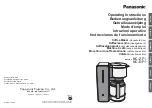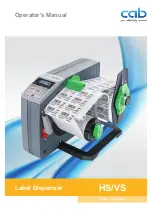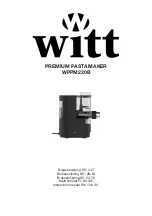
77
5.1 A
UTOMATIC
DISPENSING
SPEED
ADJUSTMENT
ALS
20X
256
5.1.3
Entering the rotary encoder
resolution
Call the function
MACHINE SETUP > Encoder Resol.
Enter the resolution of the rotary encoder to be
used.
– Adjustment range: [0.0…9999] pulses/revolution
5.1.4
Entering the diameter of the
measuring wheel
The measuring wheel [82]A] translates the conveyer
belt movement into rotation of the rotary encoder shaft
[82]B]. The diameter of the measuring wheel therefore
influences the rotational speed of the rotary encoder.
[82]
A
Measuring wheel
B
Rotary encoder
Call the function
MACHINE SETUP > Encoder Diameter
Enter the diameter of the measuring wheel to be
used.
– Adjustment range: [0.0…200.0] mm
5.1.5
Entering the rotary encoder
type
Depending on the features of rotary encoder and label
dispenser, there are different ways to count the impul-
ses generated by the rotary encoder:
Call function
MACHINE SETUP > Encoder type
.
Enter the type of measuring wheel which is mounted
on the rotary encoder shaft (further details see
below)
Single-phase operation
Only one phase of the encoder signal (signal A) is
utilized.
Advantage:
– less expense (as with double-phase)
Disadvantage:
– Lower resolution (as with double-phase)
– If the conveyor is standing still, vibrations can produ-
ce „faulty“ signals, which the labeller cannot distin-
guish from „real“ signals.
Double-phase normal operation
Many rotary encoder produce a second signal
(signal B), which is out of phase by 90°. Using this sig-
nal can overcome the restrictions of single-phase ope-
ration.
Advantages:
– Detection of the rotational direction, even when
standing still
– Double resolution
Disadvantages:
– Higher expenses (the sensor must be able to produ-
ce signal B, the labeller must be able to utilize it)
– The rotational direction must be configured
Double-phase inverted operation
If the phase relationship (leading or trailing) between
the sensor signals A and B doesn´t match the counting
direction of the labeller, the labeller calculates non-
sense speed values. The following measures correct
this problem:
– Operating the rotary encoder in opposite direction
(e. g. by mounting it on the opposite side of the con-
veyor), or
– Changing the cables, that is exchanging A and B, or
– Connecting the inverse signal /B instead of B, or
– Configuring the inversion of signal B at the labeller:
Set function
MACHINE SETUP > Encoder type
to
„2 Phases invert.“
A
B
Содержание ALS 204
Страница 1: ...ALS 204 206 256 SERVICE INSTALLATION MANUAL Labeller Edition 8 3 2012 Original version ...
Страница 2: ......
Страница 125: ...125 7 ELECTRONICS DESCRIPTION 7 3 CIRCUIT BOARDS ALS 20X 256 Layout diagram 125 Layout diagram for the CPU board ...
Страница 128: ...128 7 ELECTRONICS DESCRIPTION 7 3 CIRCUIT BOARDS ALS 20X 256 Layout diagram 129 Layout diagram for motor driver board ...
Страница 223: ......
















































